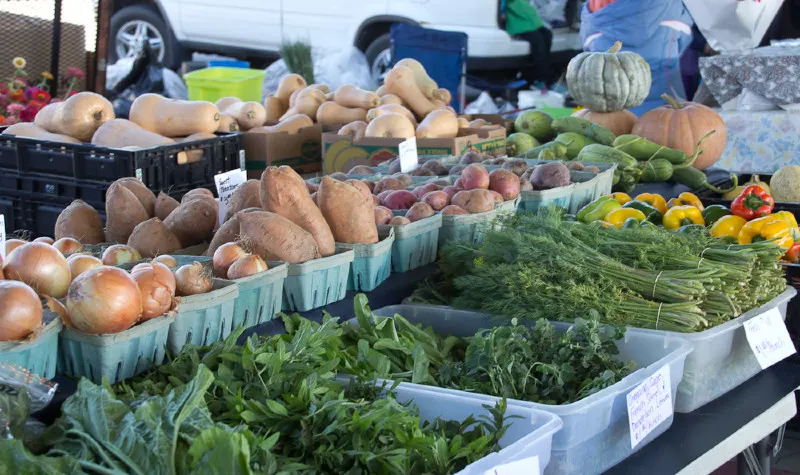
The other day, we went to visit my in-laws. As we were leaving, my mother-in-law gave me baby spinach, red cabbage, broccoli, cauliflower, a bunch of zucchini, and two pints of blueberries that she wasn’t going to be able to use up. I was a bit reluctant to take it all since I had just done our weekly shopping and wasn’t sure how I was going to be able use it all. But the idea of it all going to waste was too much for me to handle, so I agreed to take it.
Then yesterday, a good friend swung by with a gallon-sized Ziploc full of arugula that she wasn’t going to be able to eat. So suddenly, I was drowning in produce and some of it was on the verge of spoiling! But with a little thought and about an hour of time, I had taken care of much of it.
Magic? No. Here are some of my favorite ways to use up produce so that you can enjoy it throughout the week and even throughout the year.
Great Ways to Use Up Vegetables
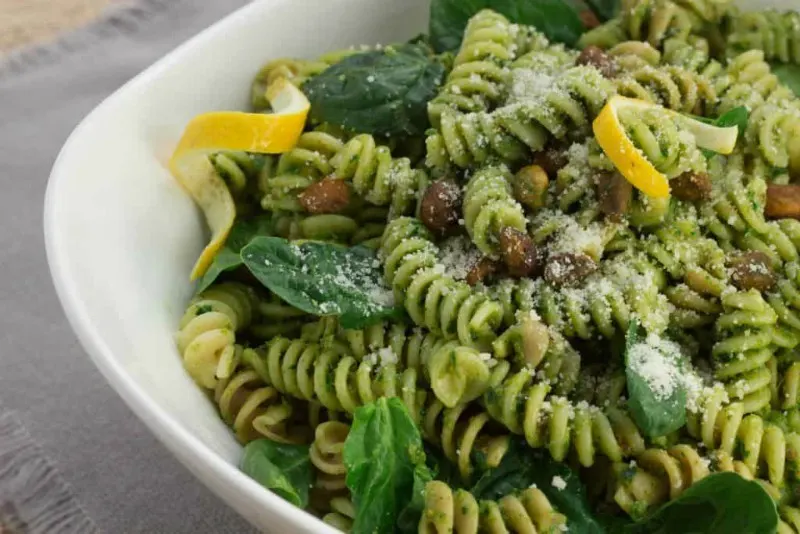
Pesto
To use up the arugula and baby spinach, I took both sets of greens, combined them, and made a giant batch of pesto.
While we usually think of basil as the green that goes into pesto, it can actually be made with many kinds of greens. Basil, spinach, arugula, kale, and parsley are all favorites in our house. Each has a slightly different flavor profile, but all of them are delicious! In fact, my favorite way to make pesto is to combine different greens into one batch as I find it adds more flavor.
Similarly, while traditional pesto calls for pine nuts, you can actually make it with any nuts or seeds you like. In addition to pine nuts, I have been known to make pesto with pistachios, almonds, pumpkin seeds, and, my personal favorite, walnuts.
Another great thing about pesto is that you can freeze it to use whenever you want! Here is my preferred method for freezing it:
- Make your pesto
- Put pesto into the cups of an ice cube tray (or trays if you are doing a big batch)
- Freeze for a few hours
- Pop your pesto ice cubes out and into a freezer bag and put them in the freezer to use whenever needed
I like doing it this way because then I can pull out as little or as much as I need for a given recipe, which leads me to another point: pesto isn’t only for pasta!
While we tend to think of pesto as a sauce for noodles, there are actually so many other great ways to use pesto. It’s delicious in soups, tossed with vegetables before or after roasting, tossed with veggies after steaming or sautéeing, as a spread on sandwiches, mixed into eggs (scrambled, omelets, or frittatas), or diluted with more oil and used it as a marinade for chicken, fish, or tofu.
For me, if offers a wonderful taste of summer in the dead of winter.
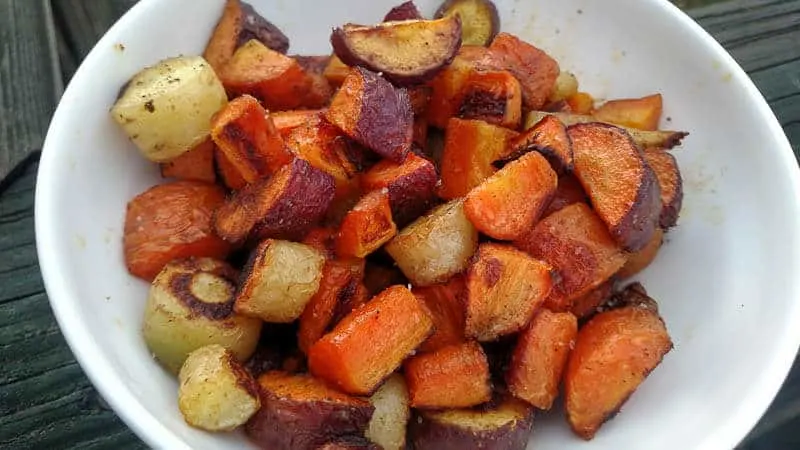
Roasting
Many vegetables can be roasted, which brings out the natural sugars in the veggies, making them extra delicious (and appealing to reluctant eaters). This week, I roasted the cabbage in one batch and the broccoli and cauliflower in another.
Almost every week, I roast a bunch of vegetables and then use them throughout the week as snacks, in salads, as a side dish at dinner, and in school lunches.
And, like pesto, you can change roasted vegetables up in lots of ways. I love to add different spice mixes (or pesto) whenever I roast vegetables. Some of my favorites include chili powder, garam masala, and za’atar.
If you want to perfect your vegetable roasting game, make sure to check out my tricks for making the perfect roasted vegetables every time.
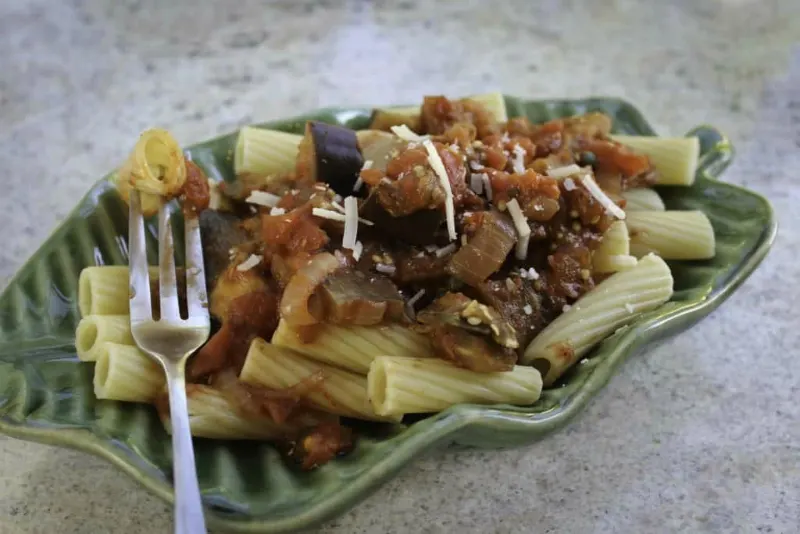
Skillet tomato sauce
A quick tomato-based sauce made in a skillet is a go-to in my house, especially in the late spring and summer, when tomatoes are in season. I will even make big batches at the peak of tomato season to freeze and enjoy throughout the winter. I love this option because the sauce can be made in the time it takes to cook the pasta and can use up many vegetables.
Some of my favorite vegetables to use in a skillet sauce include summer squashes, bell peppers, eggplant, greens, onions or spring onions, really anything you’ve got lying around that doesn’t take a long time to cook. This week, I uses some of the zucchini in a sauce, which the whole family enjoyed.
While I always prefer to use fresh tomatoes when making a sauce like this, during the times of year when tomatoes are not in season, I will happily make it with canned tomatoes as well.
Bonus tip: if you’ve got family members who are skeptical of chunky sauces, purée your sauce in a food processor, blender, or with an immersion blender for a quick fix.
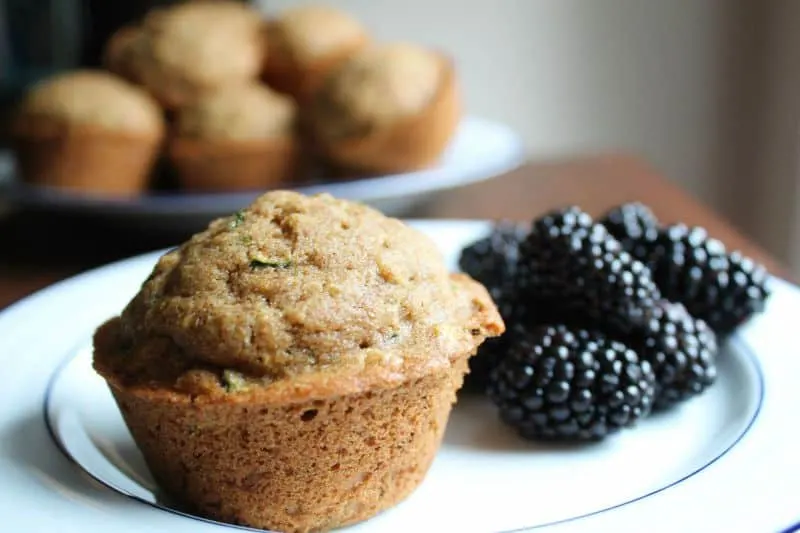
Muffins
While not all vegetables can be incorporated into muffins, there are a surprising number that work very well! I love using vegetables in muffins because 1) I can get an extra dose of veggies into my crew and 2) they freeze well, so we can use them for quick and healthy breakfasts, snacks, and school lunches.
Some of the vegetables that I like to use in muffins include zucchini (or any summer squash), carrots, spinach, sweet potato, and winter squash (you can use any pureed winter squash in place of pumpkin).
Do you have favorite ways to use up vegetables? I’d love to hear your ideas!
If you are searching for ideas and inspiration for dinner, then sign up for a free trial of The Scramble’s family-friendly meal planning service.

How To Use Eco-Friendly Gardening Techniques to Create and Urban Oasis In Your Yard
Sunday 4th of October 2020
[…] And if you want more tips for eco-friendly living, check out our post on simple ways to reduce food waste and 3 ways to use up vegetables before they go bad. […]